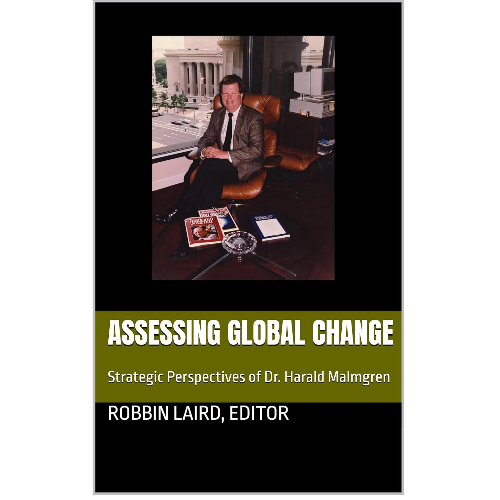John Blackburn Looks Back at the Significance of the Work of Harald Malmgren for Australia
“Assessing Global Change” offers an in-depth analysis of the major geopolitical and economic shifts occurring across the globe, presenting a valuable resource for anyone looking to understand current global security trends.
The book draws extensively on historical precedents, offering a layered understanding of today’s complexities by highlighting the importance of history in shaping modern dynamics.
For an Australian reader, the book is a timely and valuable resource. The historical depth provided by the authors enable readers to appreciate the broader forces at play, informing Australia’s National Security and Defence recalibration, which must now address the dual challenges of a rising China and the unpredictability of a multipolar world.
The book underscores the importance of strategic independence while managing crucial alliances. Australia’s relationship with the U.S. remains central to its defence posture, but there is growing recognition that it must also strengthen regional partnerships and diversify its security engagements.
The book’s exploration of the U.S. dynamic and China’s global role offers critical insights into how Australia can balance its reliance on the U.S. security umbrella while fostering relationships with other regional players like Japan, India, and Southeast Asian nations.
“Assessing Global Change” holds particular relevance for Australian readers, especially considering the significant changes in global and regional dynamics over the past five years that have necessitated a fundamental review of Australia’s national defence policy. The book offers a deep dive into the geopolitical shifts that have had direct implications for Australia’s strategic environment, particularly with respect to its relationships with the U.S., China, and the broader Indo-Pacific region.
Australia’s defence policy has undergone a significant re-evaluation in recent years due to China’s expanding influence and assertiveness, particularly in the South China Sea and its economic investments in the region.
The U.S.-China rivalry, as detailed in the book, directly impacts Australia, which is caught between its largest trading partner (China) and its principal security ally (the U.S.).
The chapter discussing Obama’s Asia pivot is directly relevant, as it mirrors Australia’s own strategic recalibration towards greater engagement in the Indo-Pacific and bolstering its defence ties with regional partners like Japan and India.
Australia’s economic reliance on resource exports, particularly to China, mirrors some of the concerns raised in the “Russian dynamic” chapter, where energy and economic interdependence are used as leverage in geopolitical conflicts. The insights into how Russia uses its energy dominance to influence Europe are especially pertinent as Australia contemplates the strategic implications of its own resource-based economic ties with China. The vulnerabilities highlighted in the book encourage Australian readers to consider how economic interdependence can be weaponized in times of heightened tension.
The European dynamic chapter also serves as a cautionary tale for Australia, particularly regarding the risks of fragmentation and economic imbalances within a regional bloc. The Eurozone crisis, driven by differing national interests and economic imbalances, can be seen as a potential parallel to the challenges facing the Indo-Pacific, where regional cooperation is becoming increasingly vital in countering shared security threats like China’s territorial ambitions.
Australia’s regional defence policies, including the AUKUS agreement and its growing defence collaboration with Southeast Asian nations, reflect the need for unity in a fragmented strategic environment, similar to what Europe has faced in the wake of its economic crises.
The General Trends and Conclusions sections are particularly relevant for Australian readers, as they outline the emergence of a multipolar world, where rising powers like China and regional actors play a more assertive role. Australia, as a middle power, must navigate these shifting alliances and uncertainties in its defence strategy.
In conclusion, “Assessing Global Change” is essential reading for Australians interested in understanding how their nation fits into a rapidly changing global order. It is a highly valuable tool for policymakers, national security strategists, and educated readers concerned with Australia’s future security and prosperity.
Air Vice-Marshal John Blackburn AO (Retd)
He is a former fighter pilot, test pilot, capability and strategy planner, and finally the Deputy Chief of the Royal Australian Air Force in which he served a total of 43 years.

